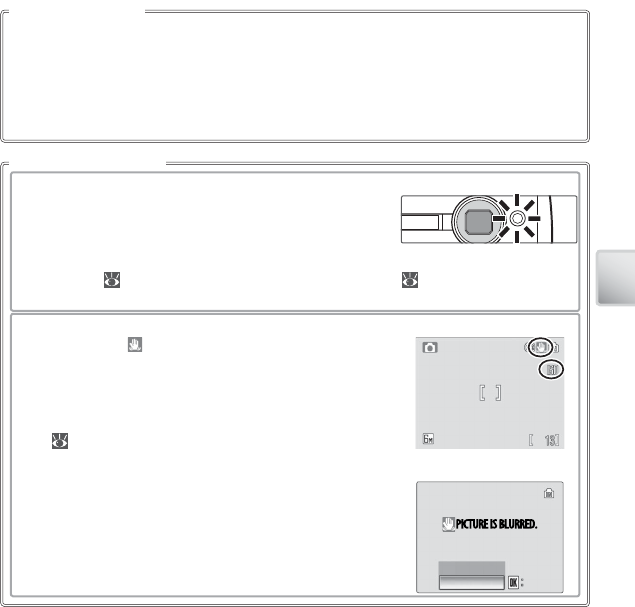
21
Basic Photography and Playback
The camera uses advanced red-eye reduction. Low-intensity light pulses cause the sub-
ject’s pupils to contract before the fl ash fi res. If the camera still detects red-eye, it will pro-
cess the image to further its eff ects (“In-Camera Red-eye Fix”; note that this may slightly
increase the time needed to record the picture). This mode is not recommended where
a quick shutter response is required; if the desired results are not achieved, try again at a
diff erent fl ash setting.
Red-eye Reduction
When Lighting Is Poor
ቢ The AF-assist illuminator may light
If lighting is poor, the AF-assist illuminator may light to as-
sist the focus operation when the shutter-release button is
pressed halfway. The illuminator has a maximum range of
about 1.9 m/6 ft. 3 in. (W) to 1.1 m/3 ft. 7 in. (T). The AF-assist illuminator is not available in
some modes ( 26–34) and can also be turned off manually ( 88), although in this case
the camera may not focus when lighting is poor.
ባ A blur warning may be displayed
If the fl ash is off , a icon will be displayed to warn that pic-
tures may be blurred as a result of slow shutter speeds. If
an ISO icon is displayed, sensitivity has been raised to com-
pensate for poor lighting and pictures may be aff ected by
“noise” in the form of randomly-spaced, brightly-colored
dots ( 78). The camera may process pictures to reduce
noise, doubling recording times.
If the warning at right is displayed after a picture is taken,
the picture may be blurred. Select No to exit without re-
cording the picture. If no operations are performed for
about twenty seconds, the picture will be recorded auto-
matically.
ConfirmConfirmConfirm
NoNo
Yes
No
SAVE PICTURE?
SAVE PICTURE?SAVE PICTURE?
PICTURE IS BLURRED.
PICTURE IS BLURRED.


















